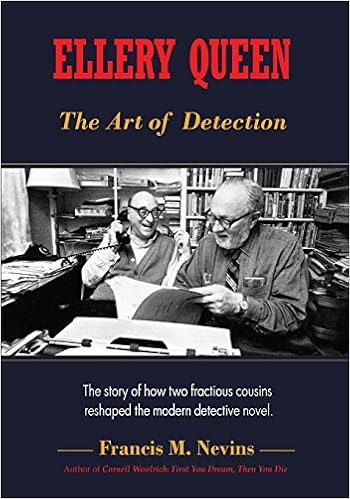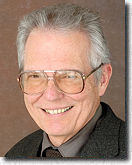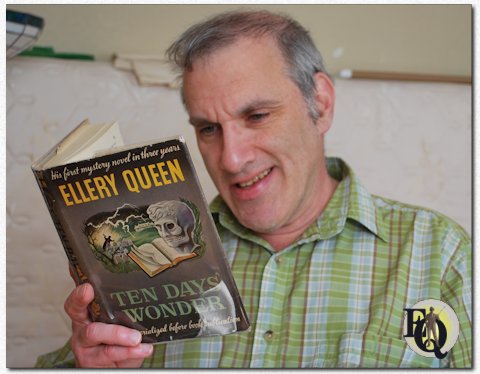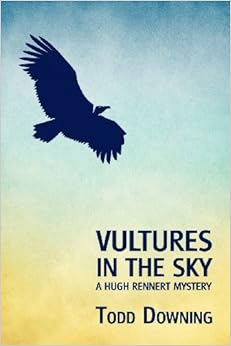One of the recent authors was my longtime pal Robert Swartwood, a successful hybrid author who had recently branched into the traditional pub world with the launch of an unusual thriller, The Killing Room (Blackstone, 2023).
 |
| Magnets, as they appear on my file cabinet. |
Yes, he was well aware that our local indie bookstore was handling sales. But Robert had another idea in mind. The books he had flagrantly transported across five state lines represented a chance to do some marketing—and house cleaning—at the same time.
Most authors have a ridiculous number of their own books on their shelves. If you’re traditionally published, your contract stipulates that your publisher will send X copies of your hardcover, and another X of your paperback when that format drops. You may have bought additional copies direct from the publisher using your author discount, and you may have gotten a freebie box from your editor or agent when they tidied their office. If you’re self-pubbed, you certainly have a stash too.
At the end of his talk with Denise, Swartwood announced to the crowd that anyone who bought the new traditionally published book from our local bookstore’s on-site table could take their pick any of his previous titles for free. (While supplies lasted, of course.)
He had no idea how this Buy-One-Get-One-Free gambit would play out, but he was curious to try it. As a Big 5 publishing exec once told the New York Times, when asked to comment on the proliferation of free ebooks on the ’Zon, “Free is not a business model.” True, but sometimes it makes strategic sense.
Yes, paperbacks of Swartwood’s indie print-on-demand titles represented money out of his pocket, but those copies were a sunk cost. Copies of books he had written under a pseudonym for an Amazon imprint had cost him nothing, as they were provided under the terms of his contract. Regardless of the source, he was tired of all these books taking up space at home. And he really wanted to show his new publishers that he could move sales of the new title under the Swartwood name. So why not offer free books as giveaways?
Well, it worked! Many people that day bought more than one copy of The Killing Room, enticed by the freebies. I saw people leaving with a mix of four to six books, which confirmed my long-held theory that at any given time people at book events would probably buy multiple copies to gift to friends or family, but are holding back due to cost. (They certainly do during the Christmas season.) But in the other 10-11 months, if you gave them an excuse to spend, they go nuts.
The freebie hit of the afternoon was the short-but-sweet Hint Fiction: An Anthology of Stories in 25 Words or Fewer (Norton, 2010), which Swartwood conceived and edited. The 188-page volume contains 125 short stories—no, I did not type that figure incorrectly—by modern writers such as Ha Jin, Peter Straub, James Frey, and Joyce Carol Oates that take their inspiration from the tragic Hemingway short “story” about baby shoes.
At a book event this past weekend, I too pulled a Swartwood. Ages ago, when I first taught myself how to format POD print editions of my indie fiction titles, I ordered a stack of paperbacks I had designed of four of my short stories. Back then, I mostly wanted to see what they looked like, and to judge if doing short stories in print was feasible. I had given most of them away, but I found a few stragglers on my office shelf a while ago.
It’s fun to give away free stuff. Swartwood’s lovely magnets were a hit too. Author Ben Wolf says in his book, Power Author: A Quick Guide to Mastering Live Events, that magnets are a pricy but smart giveaway at live events. Unlike bookmarks and other easily discarded paper items, magnets end up stuck to someone’s fridge or office file cabinet. They’re the gift that keeps giving—to authors. Month after month, year after year, they’re advertising your name and book—if done right.
Yes, I’m aware that all of this stuff costs. But for most of us, they are a reasonable tax deduction. The question then becomes how little do you have to spend to make people deliriously happy, and have them walk away thinking that they have gotten a bit of a steal? I was delighted to see that free short stories in print were greeted with the same enthusiasm as full-size novels. Depending on page count, the wholesale price of a POD novel costs me about $4-$7. A 60-page paperback “Bloody Signorina”—an AHMM short that was a Derringer finalist—costs me $2.30. That’s not free, but it’s a nice giveaway for friends, buyers, editors and other high-value contacts you encounter at conferences.
 |
| A 60-page paperback still has enough of a spine to stand up. Who knew? |
In a certain sense, this little book of mine serves as a nice “business card.” In one volume, people get a sense of my crime writing style, a list of all my books, my website URL, my newsletter sign-up info, contact info, and sample chapters to another book. A nice package overall.
Some other stuff I bring to book events in my handy tote bag:
QR Sign-up: Passersby “shoot” the code, and are directed to the newsletter sign-up at your website. (It also alerts them to the fact that you have a website.) Buy a plastic “Stand-up Sign Holder” at your stationery store. (This one is the 5-x-7 inch model.) Design a 5x7-inch image on Canva with your details. Use a QR code generator that isn’t spammy; the free one by Kindlepreneur is perfect. Make sure that people can easily find the newsletter sign-up form on your web page. You don’t want them scrolling and getting lost. Optimize your website for mobile devices. If they are going to sign up, they will do so on their phones within a minute of seeing your sign, not on their desktops at home.
Clipboard & Sign-up Sheet: Besides the QR code sign-up, I still offer a hard copy sign-up sheet, because typing on phones is still too fiddly for many people. I design the sign-up sheet with book cover art, and ask for two details only: name and email address. It gives folks something to do while you sign their book. Bear in mind that hard-copy signups mean you must now transcribe everyone’s chicken-scratch accurately and upload the deets to your mailing list. Check details before they depart the table to make sure you can read their writing.
 |
| A "chunky" bookmark, with full-bleed cover image. |
Swag: You already know that I am not a fan of bookmarks. I feel the same way about stickers, postcards, and the like. They’re often money thrown down the drain. That said, if you or your publisher have invested money in this stuff, by all means set it all out neatly on your table. Readers who are not ready to buy, or who prefer to buy ebooks or print books online, will grab ’em because they’re free and an easy way to remember your book or byline. Place swag on your table where it will not interfere with the business of signing books or your sign-up sheet. Set out a few pieces of swag at a time, and replenish them as you go. (This will reduce the chance of some whack job swiping your entire inventory.) Swartwood told me that he doesn’t love standard bookmarks because book covers have to be the size of a thumbnail to fit on them. Far too small, in his opinion, to make an impact. If you’re going to print your book cover, he says, go big. His bookmarks (and Denise’s postcards) offer large images of their book covers. As for the magnets, he ordered in such quantity from PureButtons that his price-per-piece was $1 each. Personally, I would keep nice swag like that hidden and offer them to buyers only.
Writing Tools: You will need a fistful of ballpoint pens for sign-up sheets, and Sharpies for signing books. Always bring more than you think you’ll need. They are sucked into black holes.
 |
| Mr. Swartwood takes the dais at ThrillerFest to accept his award. |
 |
| Congrats! (The ebook hit online retailers before the print edition hit stores.) |
 |
| Book 2 |


































